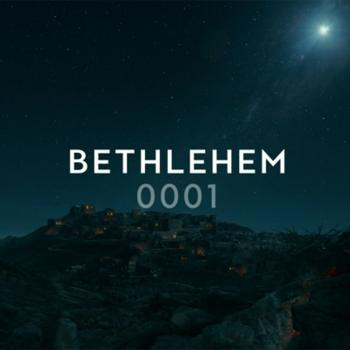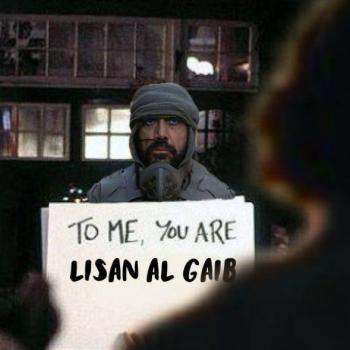I am delighted to have the opportunity to participate in the Patheos Book Club discussion of Matthew Levering’s book Jesus and the Demise of Death: Resurrection, Afterlife, and the Fate of the Christian
(Baylor University Press, 2012).
The introduction indicates the volume’s particular focus clearly and accurately. Within both Biblical studies and theology, there has been something of a move in the direction of recovering (and in some cases reappropriating) the distinctively apocalyptic eschatology of the earliest Christians and of Jesus himself. Often this is understood as a move back towards Biblical roots to the detriment of longstanding Christian tradition that reflects a more “Platonized” outlook. Levering challenges this dichotomy, seeking in the process to claim room for hope and faith in the context of an age skeptical of traditional notions of soul and afterlife.
Although the book’s title does not mention Aquinas, the content is particularly focused on bringing Thomas Aquinas’ theology, as representative of the historic Christian (and more specifically Roman Catholic) faith, into conversation with key figures in Biblical studies. And so, for instance, a chapter is dedicated to the idea of Christ’s “descent into hell” in which N. T. Wright’s lack of detail regarding Jesus in the intermediate state between death and resurrection is allowed to interact with voices from theology (both ancient and more recent), as well as other voices from the perspective of Biblical studies.
In the process, a case is offered, arguing that the historic exposition of key doctrines, such as those regarding the spiritual soul, are in fact reconcilable with, or not incompatible with, or a natural extrapolation from, what we find in the Biblical corpus.
Considering that it is a theological work, and one that is making a case for traditional views, Levering engages a wide array of recent (and less recent) controversial suggestions – from the notion of a bodied God, to the idea that the soul is an emergent property of human existence rather than a separate substance or “thing” that survives death. Sometimes (from my perspective as a New Testament scholar) the classic theologians like Aquinas seem to ignore, overlook, or for whatever other reason not address issues that critical scholarship has subsequently raised, and which must now be tackled. But in other cases, what might seem like modern issues were in fact addressed long ago – for instance, the question whether God must be spatial for Jesus to sit as the right hand of the Father, or awareness of the effects that physical damage to a person has on the personality, memory, and other aspects of human cognition that have been attributed to or connected with the spiritual soul.
If one is looking for an articulation and defense of traditional Christian eschatology – the survival of the soul beyond death and the beatific vision that awaits those who are in Christ, to name just a couple of central points – Levering’s volume most likely provides just what you are looking for, and will connect that theology with discussions in the realm of Biblical scholarship. But from my own perspective, that of a Biblical scholar who tends to be more skeptical of traditional claims and viewpoints, many issues still remained – although obviously one cannot address everything in a volume of this size. At any rate, for those seeking to avoid a tendency towards agnosticism that is characteristic of some modern theologians, Levering’s work may provide just what you need. But if you have already embraced such agnosticism in certain areas, it is not clear whether Levering’s presentation will change your mind.
In addition to providing a good opportunity for interaction between the exegetical and theological realms, Levering’s book also provides good opportunity for interaction across the Catholic-Protestant divide. Levering interacts with Vatican II, the writings of Pope Benedict XVI, and other recent Catholic perspectives, and also with Tobit in particular among books which are in the Roman Catholic canon but not in Protestant Bibles. But he also interacts with a significant number of scholars who are Protestant. And so the volume illustrates, and provides occasion for, interdenominational theological conversation.
There are a number of points at which readers who do not share all of Levering’s assumptions will have questions occur to them which are left unanswered. For instance, the traditional appreciation of virginity in Catholicism seems to simply be taken for granted (e.g. p.121 – where it is highlighted that this estimation has roots in the Bible). In a volume that is open to reconsidering the flesh-spirit dichotomy and to a reevaluation of the bodily, this cried out to me for actual discussion or justification, even if a traditional viewpoint is ultimately embraced by the author.
Many of my questions, it turns out, connect with the human body. Levering considers the “nonreductive physicalism” or Nancey Murphy, Joel Green, and others to be unable to do justice to his understanding of the Christian hope and spirituality. Levering writes (p.106), “The vision of God, our supremely intimate sharing in the wisdom and love of the Trinity, is ruled out by nonreductive physicalism. Eternal life worthy of the name…requires the spiritual soul.” This didn’t seem to me to follow from the evidence or arguments presented. Indeed, the very notion of beatific vision of God is an image – even if metaphorical – which is derived from the act of seeing, which is in human experience is inherently bodily and involves our neurons in processing the sensory inputs. The claims that abstract thought requires a “spiritual operation the material limits of the neural processes” (p.100) and that “no matter how much our neural pathways are transformed, neural pathways do not possess much potential for intimate union with divine spirit” (p.107) seemed to me mere unsubstantiated assertions. He may be right, but I do not see how Levering can know these things to be so.
But Levering’s aim is admirable, even if I am not persuaded on the details. The appropriateness of humble agnosticism in certain areas is recognized, and the desire to avoid either complete agnosticism about all matters or dogmatic adherent to tradition on the other, represents a valiant effort to find middle ground that is at once faithful to tradition and open to revision and new information (see the way this theme of the book is summed up on pp.127-129, the book’s conclusion). While I am more comfortable with Rahner’s agnosticism about what lies beyond death (quoted on p.127) than Levering is, and am not certain that Levering has in fact found quite the right balance between making room for the spiritual without negating this life and bodily existence, his placement of ancient and modern, sacred and secular, spiritual and scientific into creative conversation with one another, without presuming “to tie up the many loose ends” (p.129), results in a volume that is engaging and thought-provoking, and which anyone interested in reflecting on ideas about the soul and afterlife from a Christian perspective will find stimulates them, regardless whether their conclusions (should they feel able to draw any) are the same as or different from Levering’s.













